Something is always in bloom at Hills & Dales Estate! The estate is open year-round, so whether you visit in time to see the colorful flowers of spring or the vivid Winterberries of December a variety of fragrant and colorful blooms await. Sarah Ferrell created and nurtured the gardens for the better half of the 19th century, planting six terraced gardens and introducing native and exotic plants to the LaGrange and West Georgia ecosystem.
Throughout history, many great homes have been accompanied by extensive gardens. Typically these gardens are designed to complement the home. Fuller E. Callaway, Sr. broke with tradition and designed Hills & Dales Estate to complement already flourishing gardens in LaGrange, Georgia.
Through many generations, the gardens have grown and flourished. Today, the estate rests as a museum and offers year-round tours. Hills & Dales has something in bloom every month of the year, leaving patrons with a truly unique experience every time they visit! One trip to Hills & Dales may not be enough, and often leaves guests with inspiration for their own home gardens or a new appreciation for nature and it’s ability to return each Spring.
January
During the mild winters of Georgia, January usually lives in shades of grey. The gardens at Hills & Dales Estate, in contrast, host a variety of fragrant and colorful blooms in order to lift the dreary mood. The pink Camellia adds a flood of color to the evergreen shrubs that surround it, and the Wintersweet flowers are said to produce the most beautiful perfumes of any plant. In the greenhouse, you’ll find the Calla Lily blooms among Orchids and Euphorbia. The dainty flowers of the Jasmine vines fill the room with a tropical smell, foreign to the chilly month of January. In some cultures, the Jasmine flower represents good luck, a good sign to welcome in the new year.
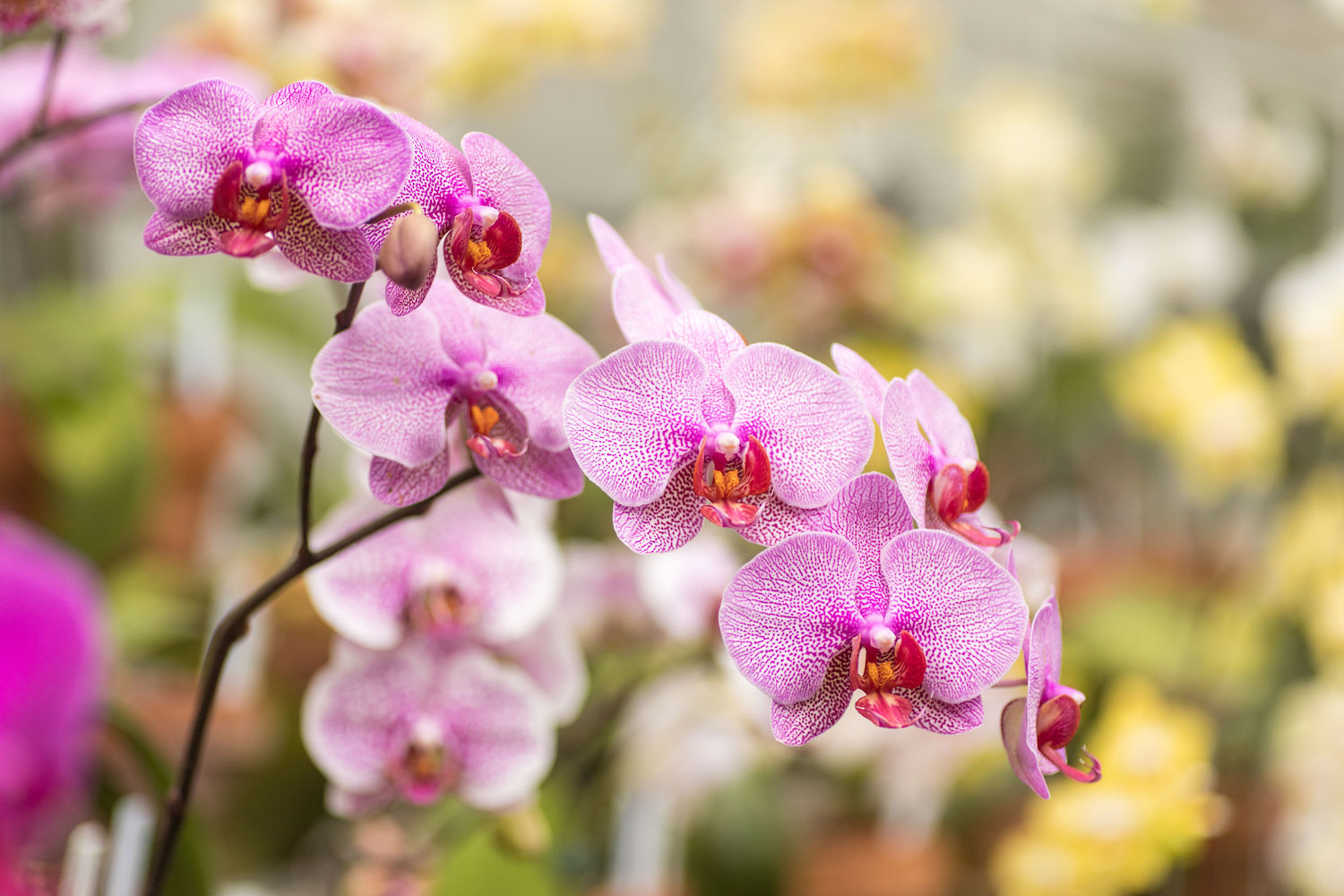
February
In February, Hills & Dales Estate boasts Daffodils, Forsythia, Magnolia and Summer Snowflake. The Daffodils and Forsythia add a splash of yellow to the gardens’ color palette that anticipates the coming spring. While we are all familiar with our native Southern Magnolia that blooms in May and June and commonly appear in bridal bouquets as a symbol of the bride’s purity and nobility, it’s the Asian Magnolias that fill the garden with color in February.
These Magnolias are deciduous and mostly native to Southeastern Asia. They range in color from white to pink, to dark burgundy, and are a sight to behold. Hills & Dales even has a rare yellow one! But this is truly the Camellia’s month to shine. Just in time for Valentine’s Day, they symbolize love, affection and admiration, and come in pink, white and red. Seeing these beautiful blooms is a refreshing change from the typical rose bouquet.

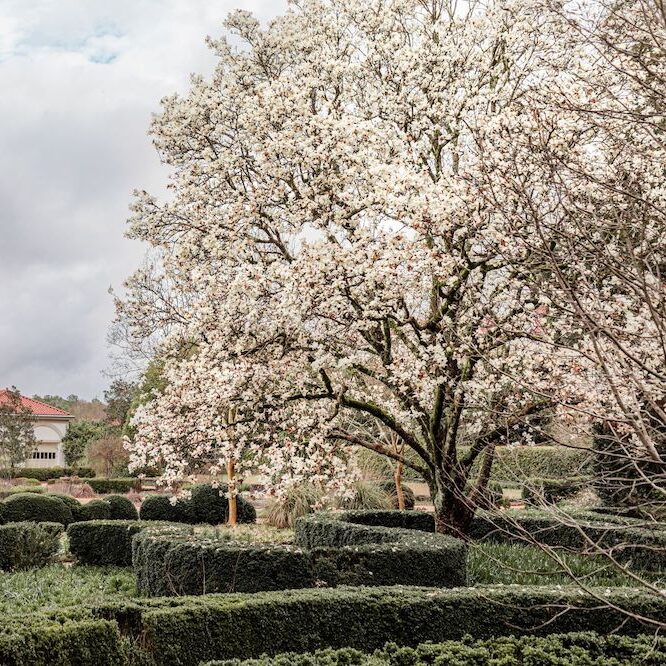
March
March is the time for spring cleaning. While the Violas, Callas and Orchids remain, this month also welcomes Azaleas, Weeping Cherry, Spireas and Kerrias. The Azaleas make their appearance just in time for LaGrange’s annual Azalea Storytelling Festival, and the branches of the Weeping Cherry tree offer the perfect place for couples to greet their first or their fiftieth spring together.
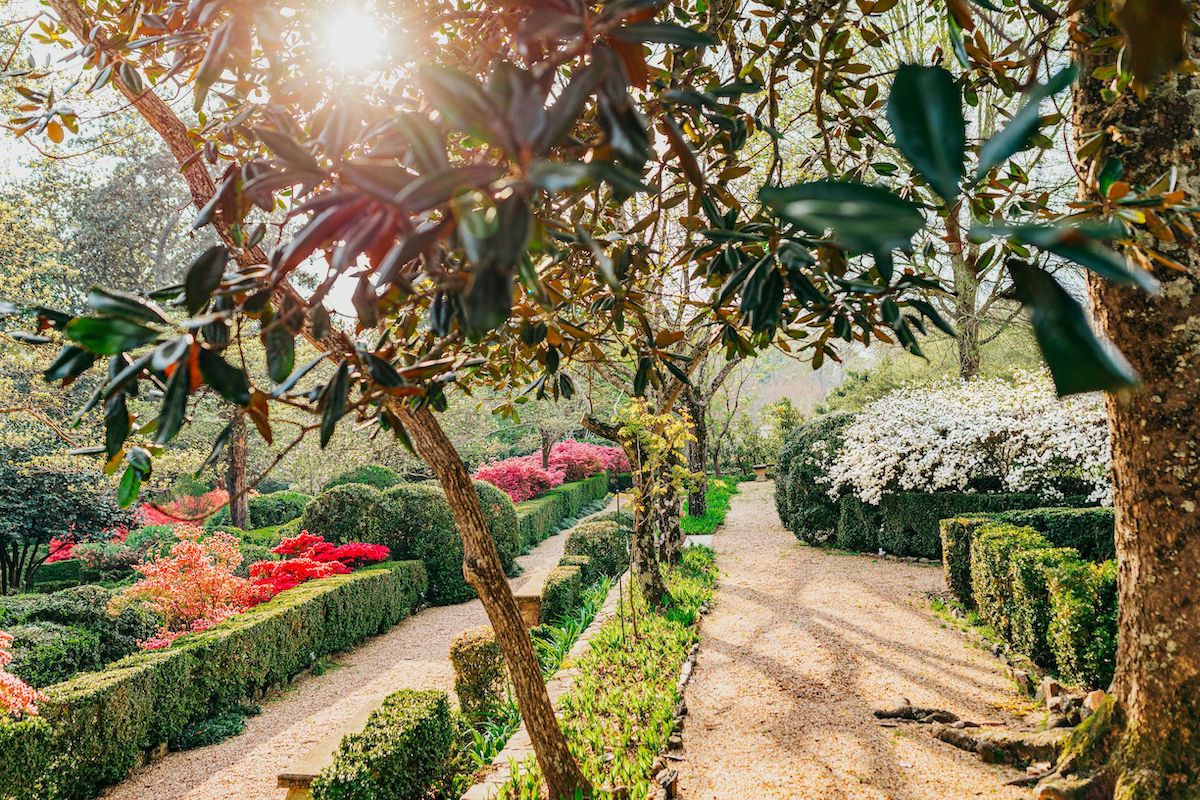
April
April is greeted by the feathery white flowers of the Fringe Tree. Its branches are almost reminiscent of a burlesque dancer with a feather boa, and in the evenings its flowers will fill the gardens with a sweet, lilac smell. April seems to be the month for unique blooms. It also welcomes in the Amaryllis flower with its exotic looking trumpet shape, as well as the Anthurium with its glossy, heart-shaped leaves and waxy-looking heart-shaped blooms. The beauty of the area’s signature Azaleas continues into April, and this is regarded as many as one of the best month’s to visit the Estate.
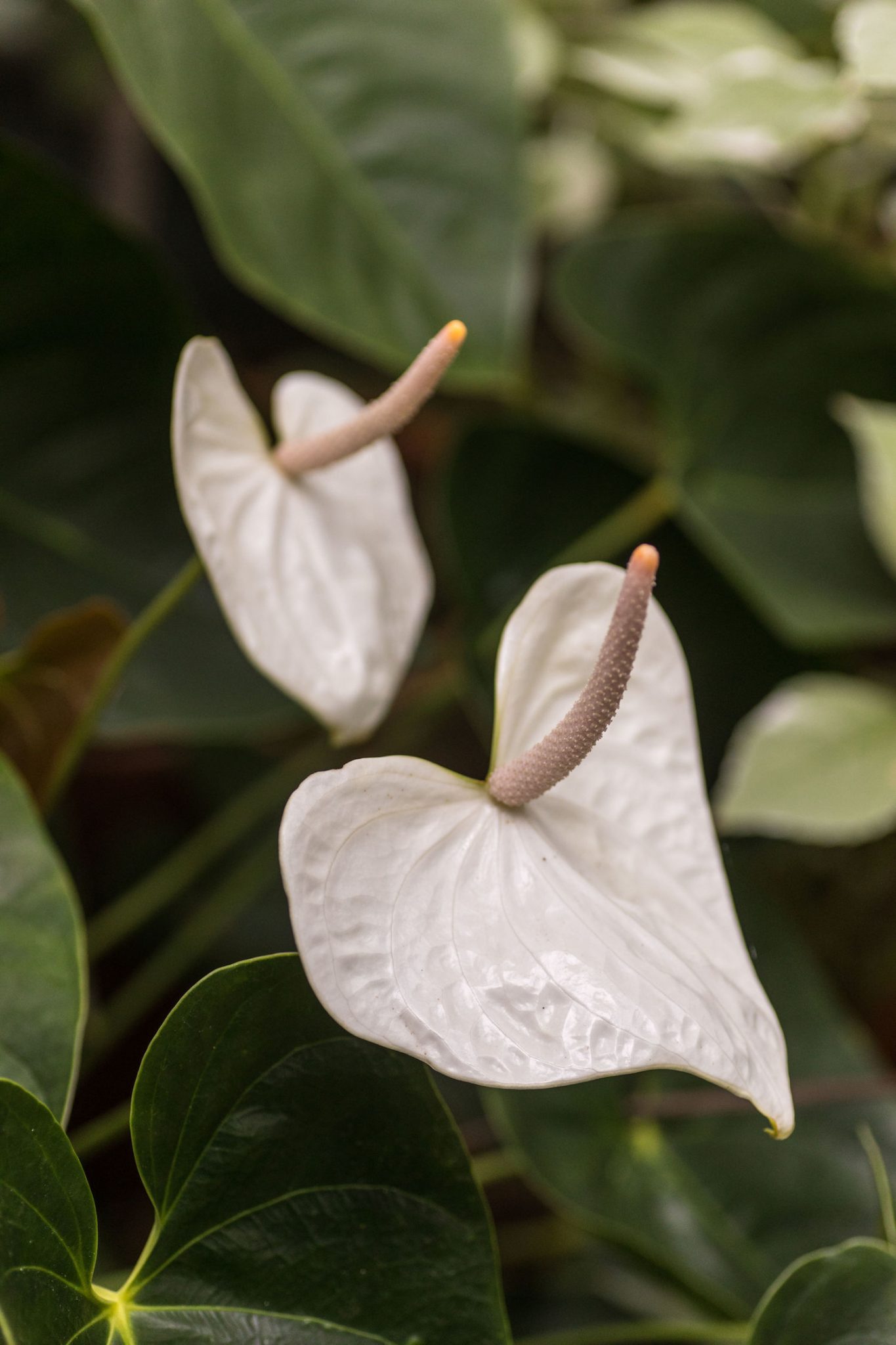
May
As the summer heat begins to creep in, the month of May brings Hydrangeas, Lavender and Roses to the Ferrel Gardens. The soft purple of the Lavender contrasts nicely with the bright, lemon yellow blossoms of the Golden Rain Tree. The flowers of the tree are accompanied by air-filled fruits that are often said to resemble Japanese lanterns. A plethora of shade from Oak and other various trees provides a much needed respite from the sun, and allows Hills & Dales to be explored long into the dog days of the summer.
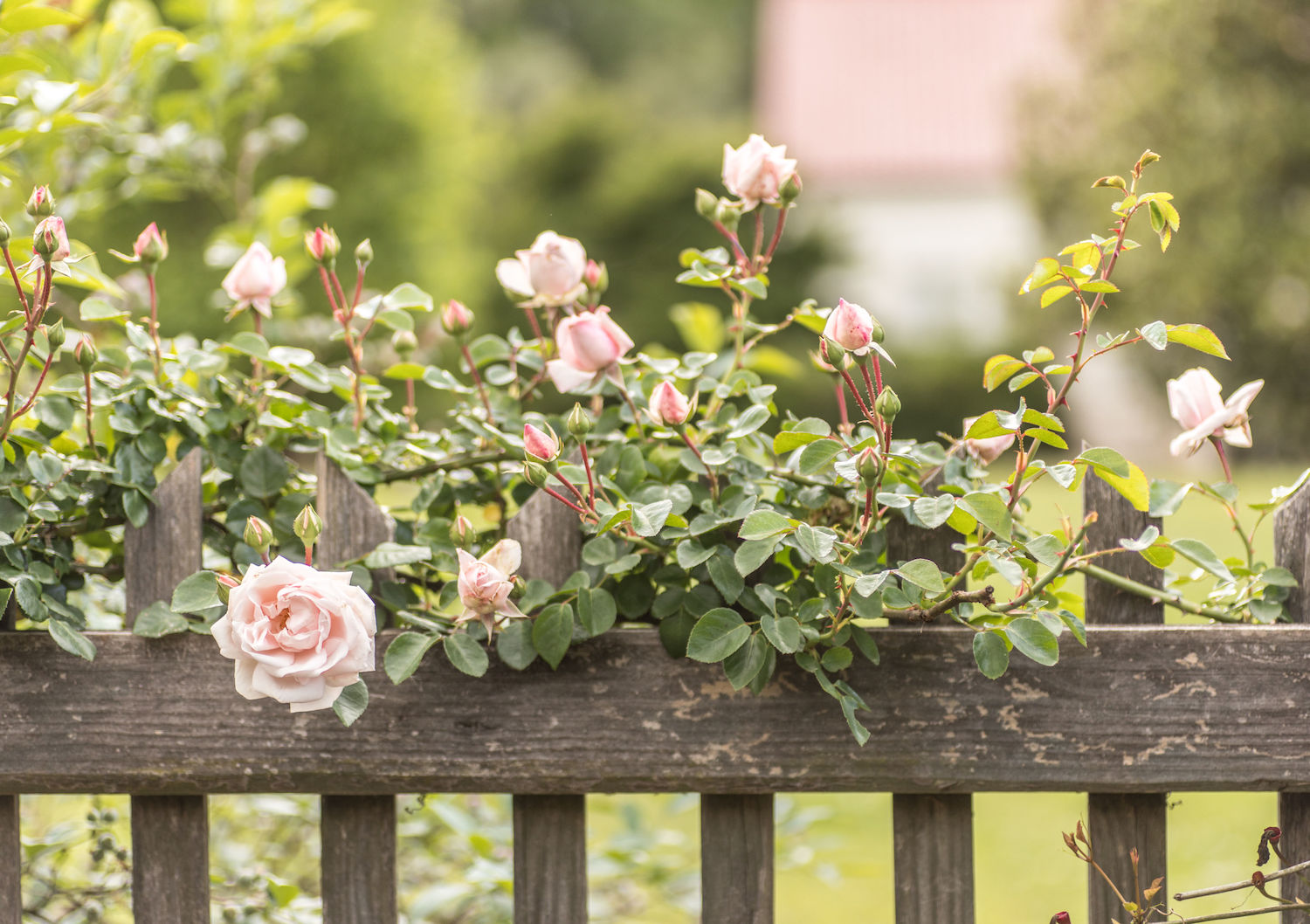
June
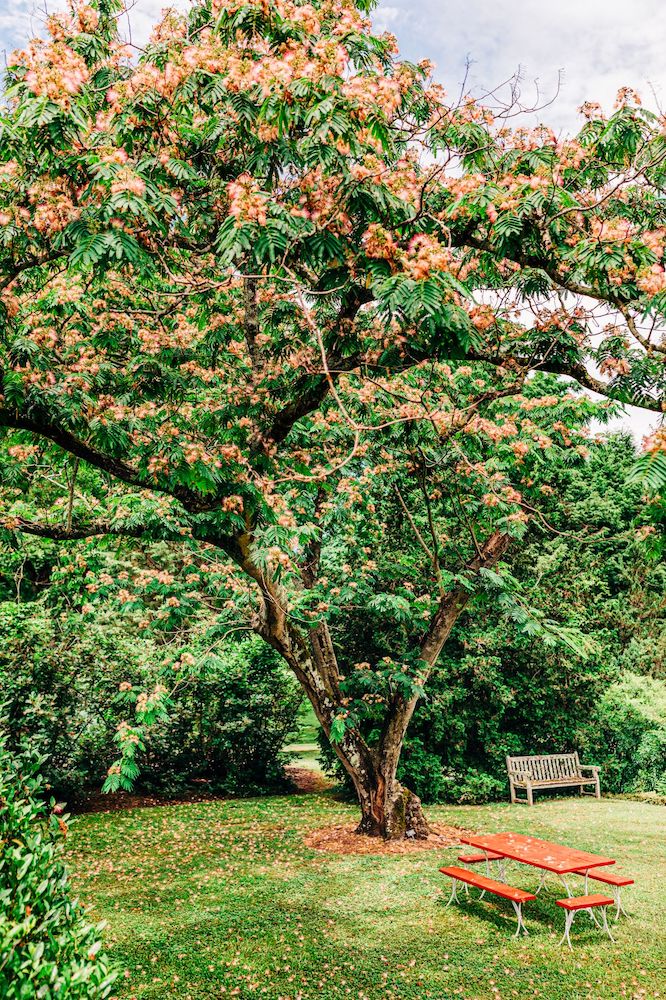
In June you can begin to see Crossvine, Mimosas and Oleander. The Mimosas call to mind the brunch beverage with their froth of yellow flowers, and while the Oleander blooms are beautiful, they are also deadly. Touching the plant can cause skin irritation, and their leaves are toxic if ingested. But as long as visitors do not mistake the gardens for a brunch buffet, there is no cause for concern. June also welcomes Geraniums to the greenhouse, a flower that many home gardeners are familiar with. The beauty of the greenhouse is perhaps overlooked during the height of summer, but don’t miss this world-class area of the gardens!
July
In addition to familiar summer traditions of barbecues, fireworks and days at the lake, July welcomes classics such as Black-Eyed Susans, Hibiscus, Crape Myrtles, Elephant Ears and Castor Beans. The vivid bursts of magenta in the dark green foliage of the Crape Myrtles is striking and inviting. It is always fun to tell small children that the luscious, dramatic leaves that they see sprouting from the ground are called Elephant Ears. They make you feel like you are in the jungle and an elephant could be just around the corner, adding to the worldly appeal of the Estate.
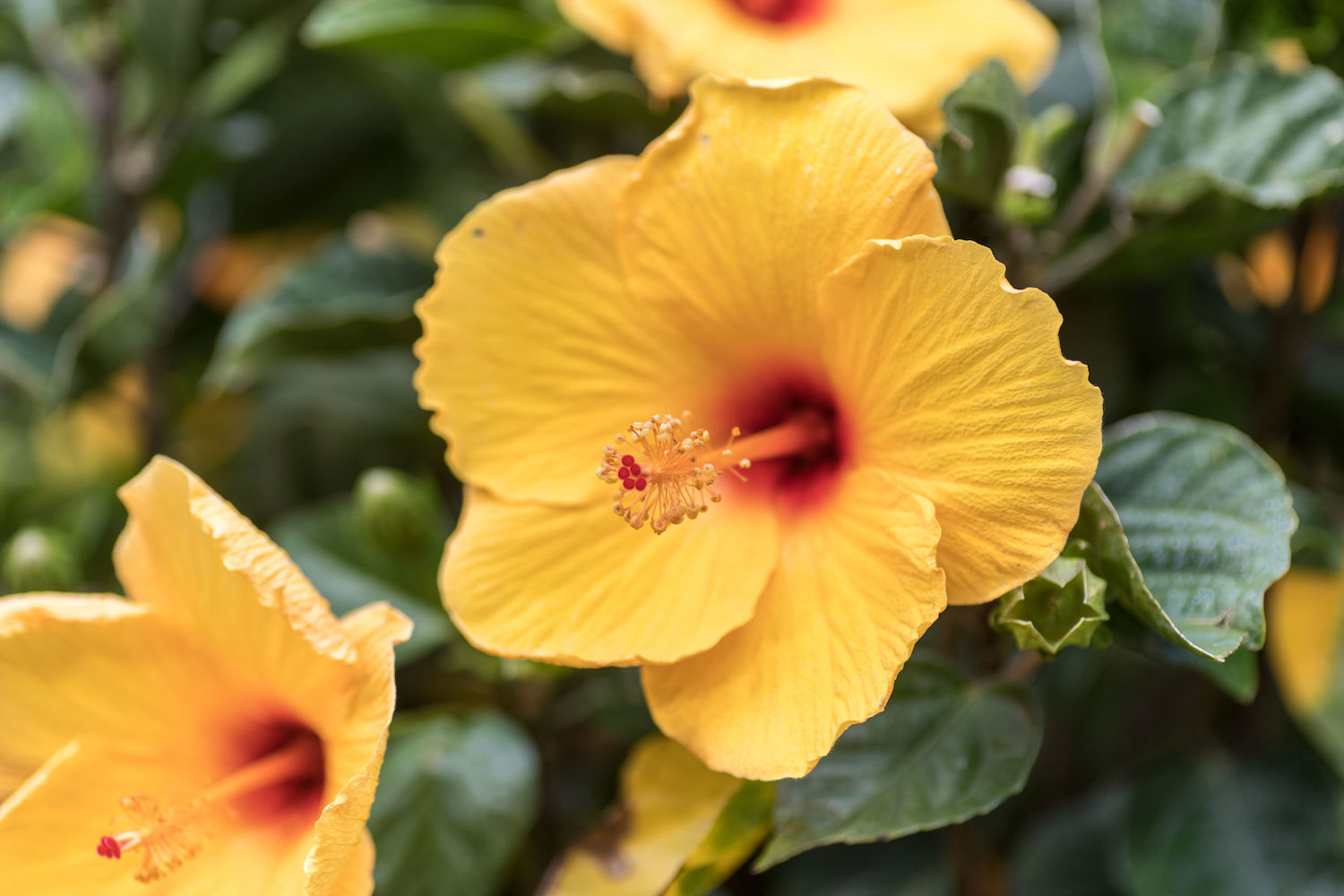
August
The August heat is hard to beat without a glass of lemonade. During this heatwave of a month, Angel’s Trumpet, Goldenrod, Seven Son Flower and Sweet Autumn Clematis are just a few of the many blooms that make an appearance. Goldenrod does not cause seasonal allergies as many people believe. On the contrary, this wild plant has many well-known healing properties, and there is something innately summer-like in its golden color.

September
September continues to host beauties like Angel’s Trumpet, Castor Bean, Firespike and Seven Son Flower. So if you missed them the month before, or simply could not get enough of them, they are still around for your enjoyment. During this month, the best sign that cooler weather is on its way is the drifts of brilliant red Spider Lilies that some people call September’s siren.
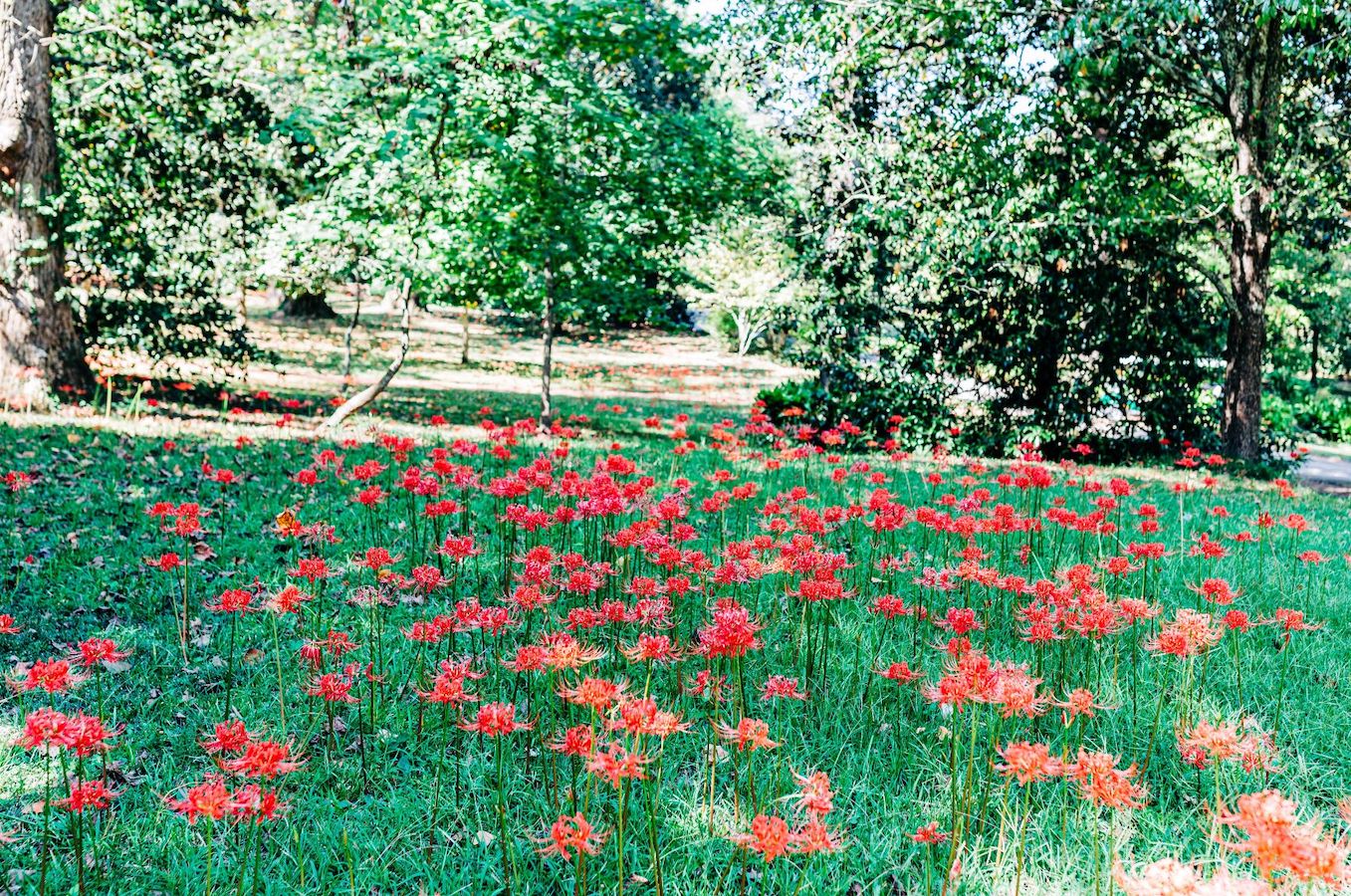
October
With the turning of the leaves in October comes Sasanqua, Tea Olive and the Chinese Tea Shrub. These are some of the most fragrant plants, and the Chinese Tea Shrub yields tea oil that makes most traditional caffeinated teas.
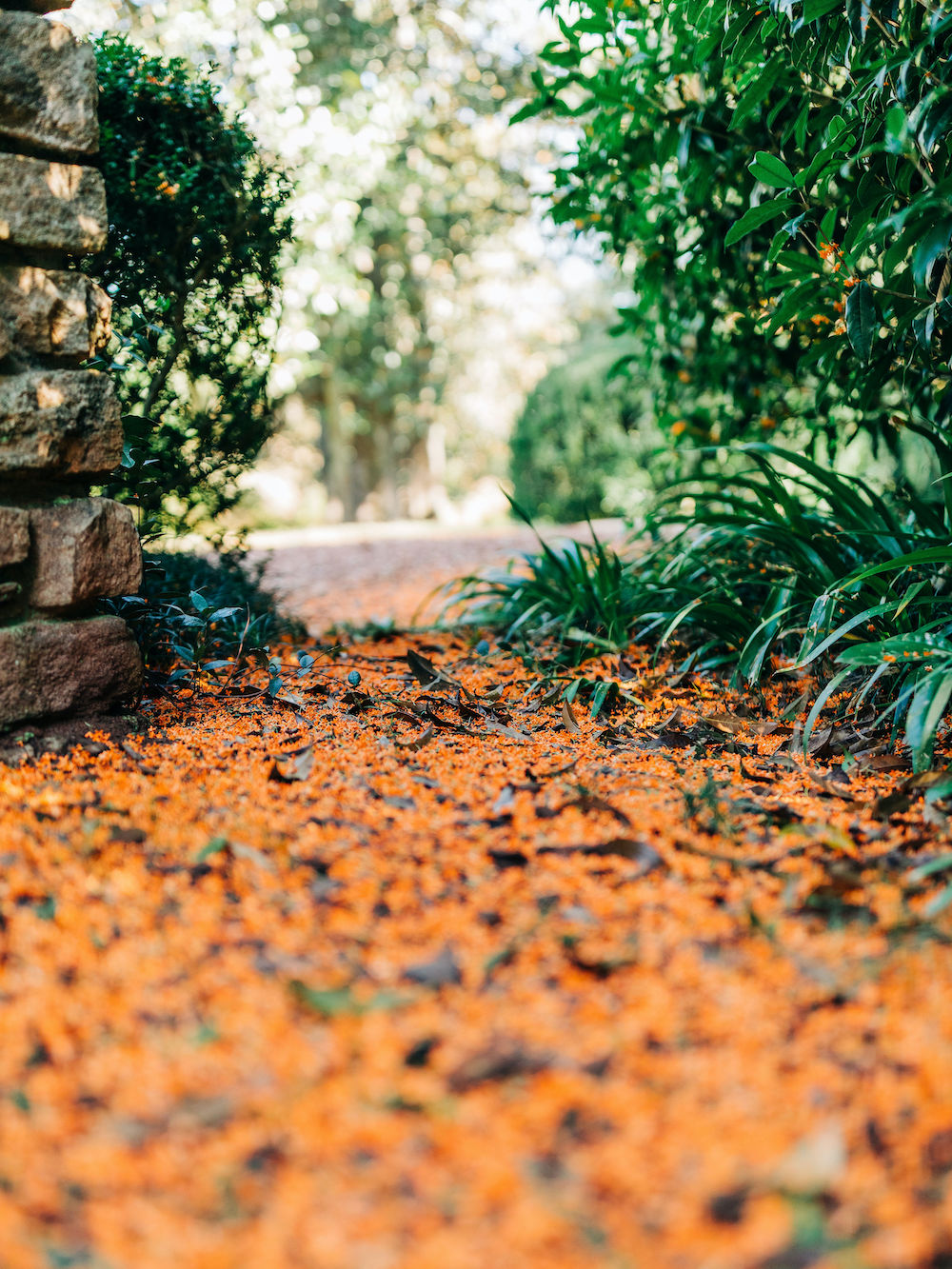
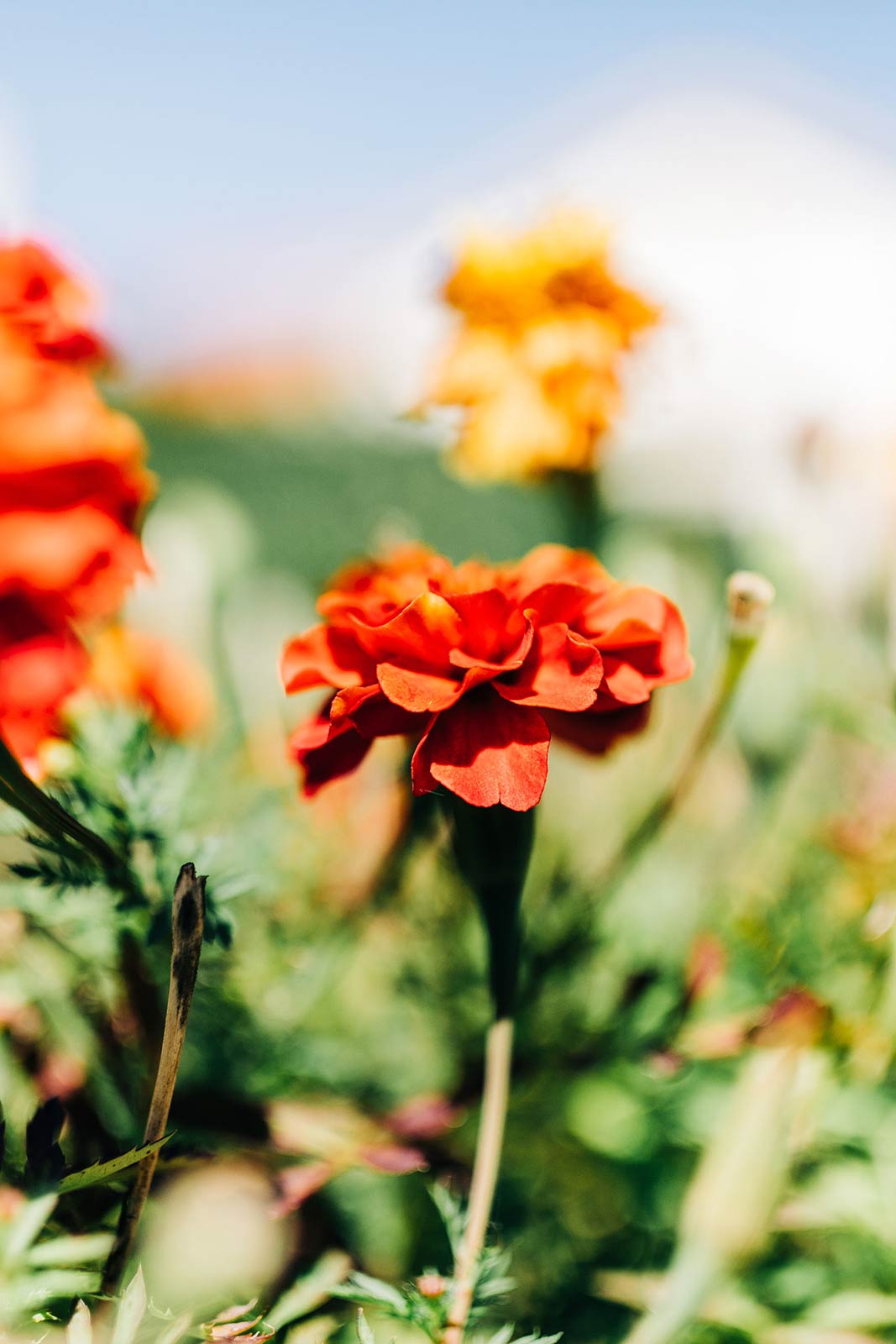
November
November continues to host Anthuriums, Begonias, Sasanqua and Camellias, but it also welcomes the colorful changes in the Ginkgo tree. Despite its legendary smell, the Ginkgo is a living fossil. This means that it has remained virtually unchanged for millions of years. Obviously, the Ginkgo tree at Hills & Dales is not millions of years old, but it is still an interesting link in botany history.

December
Hills & Dales ushers the year to a close with Winterberry and Poinsettias. Anyone who grew up with these bright red flowers in their living room during the holidays should feel right at home in the gardens during this month. Equally beautiful this time of year is the lovely Nandina or heavenly bamboo, a poisonous plant native to eastern Asia that can be very invasive. The red fruited Nandina is prized for Christmas decorations this time of year but the rare yellow berried form is the real treasure.

Photo by Kelsey Partin
No matter if you are able to visit once or twelve times a year; there is always something beautiful to see in the gardens at Hills & Dales Estate. From the beautiful design of the historic mansion to the glass cocoon of the greenhouse, the estate has something for every season, and in honor of Sarah Ferrell, there is always something in bloom. Sometimes you may find that one visit is simply not enough!
There are plenty of exciting attractions and exhibits around the LaGrange area for you to explore after your visit to Hills & Dales Estate. If you are a history buff, The Legacy Museum on Main offers a look into the history of West Georgia, including a dive into the Callaway family itself. Art lovers can enjoy one of LaGrange’s three art museums: LaGrange Art Museum, the Cochran Gallery and The Lamar Dodd Art Center, and fans of the theatre may be lucky enough to catch a show at LSPA.
There are also plenty of delicious eats around town, local favorites include Taste of Lemon, Charlie Joseph’s or Mare Sol! If you are looking to extend your stay, consider getting a room at our beautiful downtown Marriott or the immaculate Truitt Vanderbilt Club.